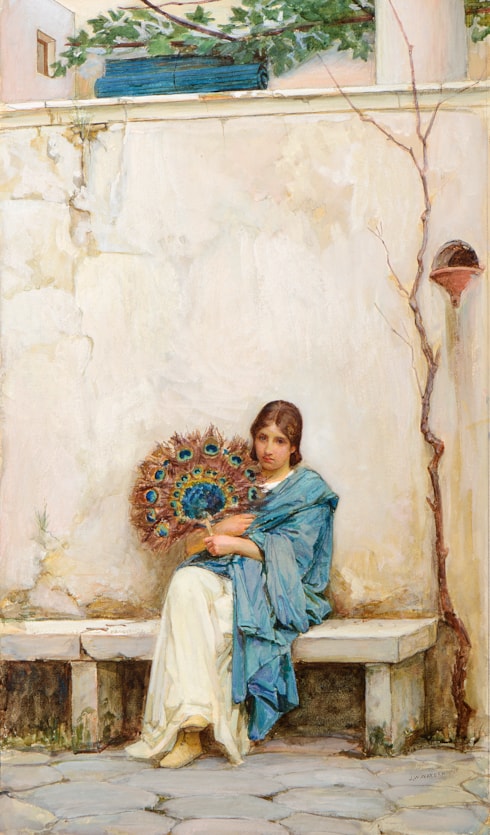
John William WATERHOUSE
Rome 1849 - London 1917
Biography
The son of an English painter working in Rome, John William Waterhouse lived in Italy until he was about five years old. (Throughout his life, he was known among family and close friends as ‘Nino’, short for ‘Giovannino’.) He trained with his father before entering the Royal Academy Schools in 1870, aged twenty-one. He began exhibiting at the Society of British Artists in 1872, and made his debut at the Royal Academy two years later, with a painting of Sleep and his Half-Brother Death. He also began showing at the Dudley Gallery in 1875. In much of Waterhouse’s early work, the influence of the classicizing paintings of Lawrence Alma-Tadema is evident; these works proved to be commercially successful and earned the artist a steady income.
The 1880’s saw a distinct change in Waterhouse’s style, with the yearly exhibition at the Royal Academy of a succession of large, dramatic canvases of historical or literary subjects. These grand and imposing canvases - Diogenes (1882), The Favourites of the Emperor Honorius (1883), Consulting the Oracle (1884), Saint Eulalia (1885), The Magic Circle (1886), Mariamne (1887) and The Lady of Shalott (1888) – resulted in the precocious artist reaching the heights of his public fame. Waterhouse was elected an Associate Member of the Royal Academy in 1885, at a relatively young age for such an honour, rising to full Membership in 1893. He continued to exhibit large-scale subject pictures – generally of beautiful women from mythology, literature or poetry, with titles such as Circe, Danaë, Hylas and the Nymphs, Ariadne, Echo and Narcissus, Ophelia, Flora and the Zephyrs and La Belle Dame sans Merci - in which his mastery of colour and figure drawing is readily evident. Waterhouse was also a gifted portrait painter, always of women, although only a handful of these works were exhibited.



